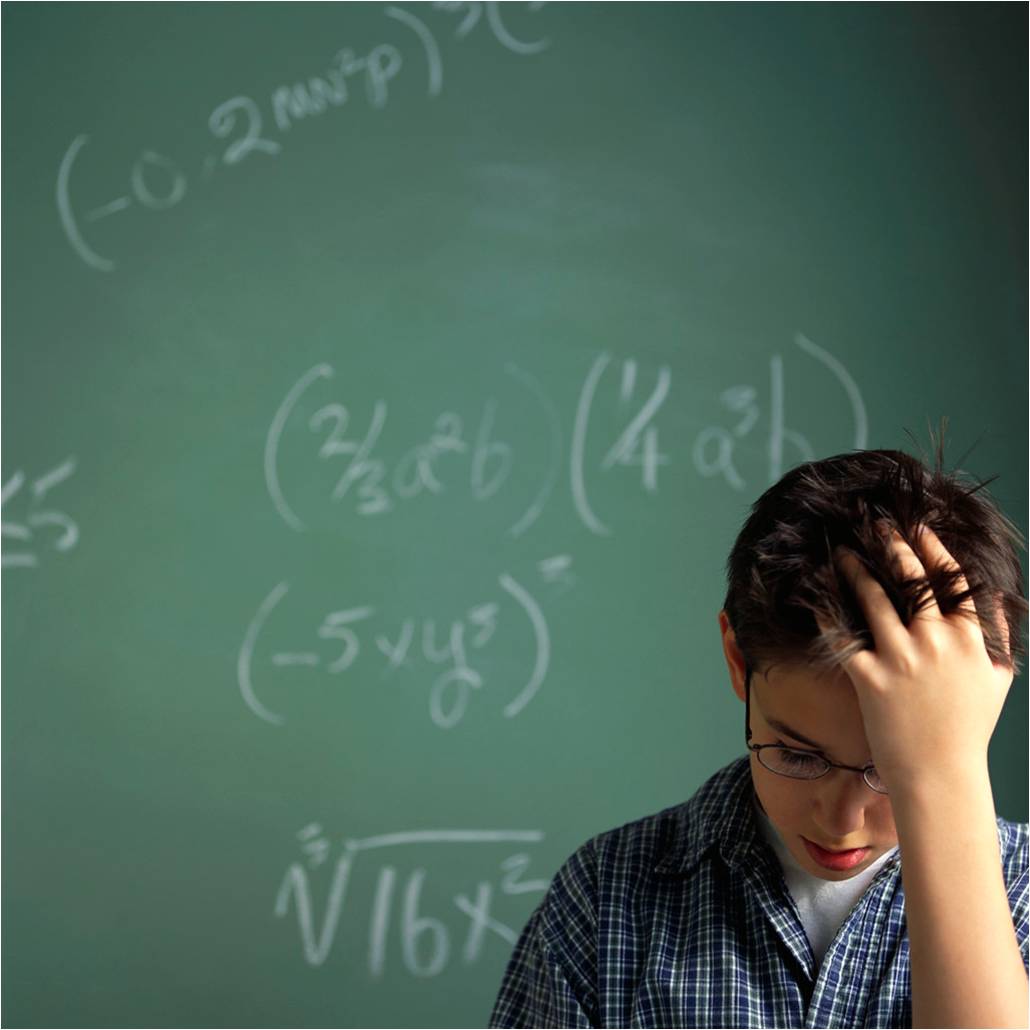Math Dyslexia (Dyscalculia)

Quick facts about math dyslexia
- Not an actual kind of dyslexia. The proper word to describe severe difficult with math is dyscalculia
- Affects 3-6% of the population
- A developmental, brain based, hereditary learning disability
- Equally common among boys and girls
- Early symptoms include a delay in ability to perform very simple addition and subtraction
- Distinguished by a lack of “number sense” such as understanding immediately and intuitively that six is more than five.
Definition
Math dyslexia or 'dyscalculia' is a specific learning disability characterized by an extreme difficulty performing mathematical operations.
While there is no universally agreed upon definition, according to the American Psychiatric Association, the Diagnostic and Statistic Manual V (2012) a diagnosis of a Specific Learning Disorder requires:
"persistent difficulties in reading, writing, arithmetic, or mathematical reasoning skills during formal years of schooling. Symptoms may include inaccurate or slow and effortful reading, poor written expression that lacks clarity, difficulties remembering number facts, or inaccurate mathematical reasoning.
Current academic skills must be well below the average range of scores in culturally and linguistically appropriate tests of reading, writing, or mathematics. The individual’s difficulties must not be better explained by developmental, neurological, sensory (vision or hearing), or motor disorders and must significantly interfere with academic achievement, occupational performance, or activities of daily living."
Symptoms
Below is a short list of symptoms, some of which can appear prior to grade school:
- Delay demonstrating the ability to count
- Delay in ability to perform very simple addition and subtraction
- Slow to memorize arithmetic facts
- Lack of “number sense” such as understanding immediately and intuitively that six is more than five
- Difficulty using finger counting
- Difficulty understanding place value
- Great difficulty memorizing times tables, understanding reasoning methods and multi-step calculation procedures such as algebra
- Anxiety and a dislike of math
Similarities with Dyslexia
• Specific learning disability
• Brain based
• Hereditary
• Equally likely in boys and girls
50% of children with dyscalculia also have dyslexia, suggesting a similar underlying condition.
Treatment
Successful treatment for math dyslexia is not as well researched as that for dyslexia itself, but from what we know, the treatments that do work share similar qualities with those that work for dyslexia proper. For example, intensive, structured, multisensory cognitive approaches have been shown to help. By accessing information from many senses in a systematic way, students have a greater opportunity to retain and apply the learning, compensating for any single disability.
Some helpful videos demonstrating multisensory approaches created by Christopher Woodin, Math Department Chairman from Landmark Elementary & Middle School in Massachusetts can be found at the bottom of this page.
Software options
Computer software is finally catching up to the best pen and paper reading and math programs. When properly designed software offers a number of advantages over traditional systems including:
- Much lower costs (very good for parents on a budget)
- Easy to incorporate appropriate teaching methods right into the software itself - such as teaching in step by step sequences, without progressing until mastery is achieved at each stage
- Immediate feedback
- Automatic adjustment of difficulty
- Infinite patience
- Ability for students to work independently
- Effortless and detailed progress tracking built in
- Reduces amount of training required to deliver a program
- Develops keyboarding skills and computer literacy
- Fun! Software is often game based, making reading fun—exactly what it should be
Deciding which software application to use can be overwhelming since there are dozens available for teaching any mathematical concept, but not all are appropriate for children with learning disabilities. Investigate carefully to see if the software was designed for students who struggle with math, otherwise frustration and lost confidence may result.
Video examples of multi-sensory math teaching
The first video demonstrates the use of gross motor skills to help in the memorizing of a sequence of 'steps' in long division.
The second video demonstrates the use of icons and color.
Note
The videos do not necessarily demonstrate techniques proven to be effective, they simply demonstrate how multisensory techniques, often used in reading and writing, can be incorporated into mathematics.
The third video demonstrates the use of imagery
The fourth video demonstrates the use of touch.
Final thoughts on math dyslexia
Dyslexia and difficulty in math often go hand in hand, but through application of proper teaching technique and the use of the latest software the potential for learning math has never been greater.
Return to the top of Math Dyslexia
- Home ›
- Types of Dyslexia ›
- Math Dyslexia
New! Comments
Share your thoughts or ideas! Leave us a comment in the box below. You can post it at this site only or on Facebook too, it's up to you.